#squamata
Text
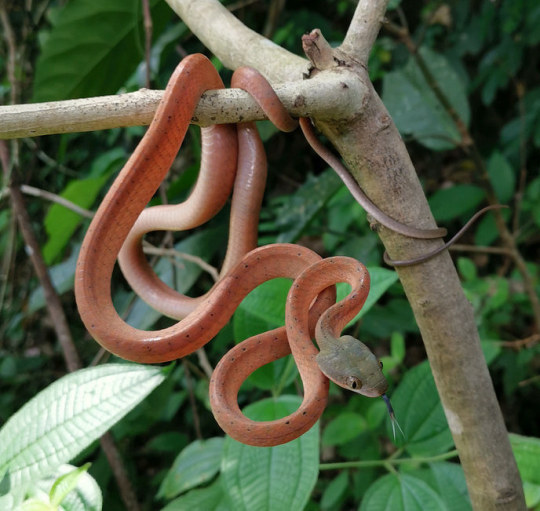
A black-headed cat snake (Boiga nigriceps) in Selangor, Malaysia
by cowyeow
#black headed cat snake#cat snakes#colubrids#snakes#reptiles#boiga nigriceps#boiga#colubridae#serpentes#squamata#reptilia#chordata#wildlife: malaysia#wildlife: asia
78 notes
·
View notes
Text
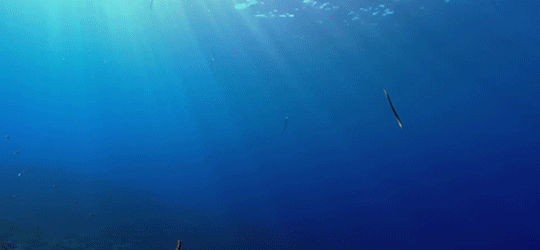
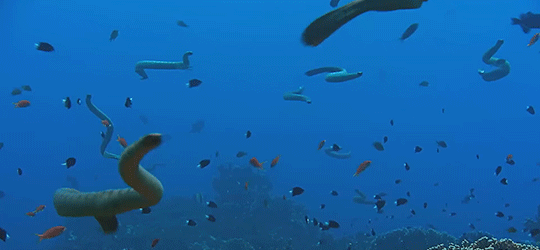



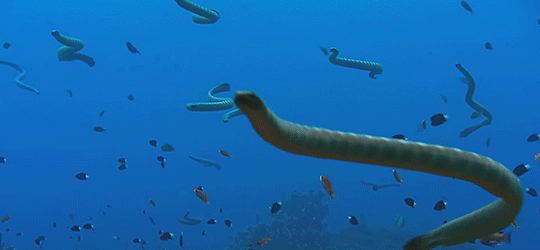

Most species of sea snakes spend their entire lives in the ocean. To move in this marine environment their bodies have adapted to be tall, thin blade shapes with long paddle-like tails. They cannot breathe underwater, but their lung extends almost the full length of their body to help them retain oxygen underwater and with buoyancy control.
BBC
3K notes
·
View notes
Text

Most mosasaurs all had very similar body plans: they were streamlined scaly monitor-lizard-like marine reptiles with four rounded paddle-shaped flippers, and many of them also had large shark-like tail fins.
But Megapterygius wakayamaensis here seems to have been doing something a bit different.
Living towards the end of the Cretaceous, about 72 million years ago, in the waters covering what is now western Japan, this mosasaur was around the size of a modern orca, roughly 6m long (~20').
Unlike other known mosasaurs its flippers were huge, bigger than its own head and distinctively wing-shaped, with the back pair being larger than the front. This is an arrangement oddly reminiscent of the unrelated plesiosaurs, and may suggest a convergent sort of highly maneuverable "underwater flight" swimming ability – but unlike plesiosaurs Megapterygius also still had a powerful fluked tail, so how exactly all of its fins worked together is still unknown.
It's also the first mosasaur known to preserve potential evidence of a dorsal fin. Some of its back vertebrae show a change in orientation at the point where a fin base would be expected to be, closely resembling the vertebrae shape of cetaceans like the modern harbor porpoise.
—
NixIllustration.com | Tumblr | Patreon
#science illustration#paleontology#paleoart#palaeoblr#megapterygius#mosasauridae#mosasaur#squamata#lizard#lepidosauria#reptile#marine reptile#art#congrats to the artists who put speculative dorsal fins on their mosasaurs before this
594 notes
·
View notes
Text
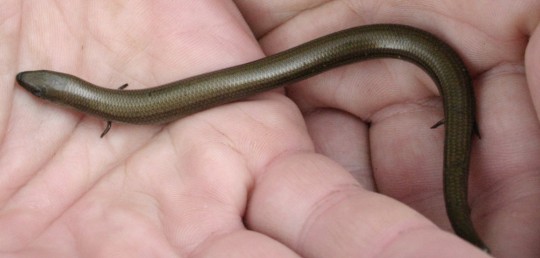
Italian Three-Toed Skink (Chalcides chalcides)
Family: Skink Family (Scincidae)
IUCN Conservation Status: Least Concern
Like several other species of lizard, the Italian Three-Toed Skink has adapted to move through areas covered with dense vegetation by developing an elongated, flexible, snake-like body with highly regressed limbs, although unlike many other "snake-like lizards" members of this species still possess four tiny limbs, each ending in a stumpy three-toed foot. Said limbs are far too small to support the skink's weight and serve no role in movement (which is achieved through an elegant snake-like slithering motion,) which has led many to question what purpose, if any, they serve; it is generally assumed that the limbs are vestigial and that, given sufficient time, the descendants of modern Italian Three-Toed Skinks will lose them entirely, although some herpetologists and evolutionary biologists have suggested that the continued existence of this species' limbs suggests that they must serve some function, such as being moved as part of a courtship display or allowing mating individuals to hold onto one another (although as these behaviours have never been observed these suggestions are entirely speculative.) Found in damp, well-vegetated areas across most of mainland Italy as well as Tunisia, Algeria, Libya and the nearby island of Sardinia, members of this species are diurnal, feed mainly on insects and breed during the spring; like most skinks, females of this species give birth to live young, with newborns, which resemble miniature adults, being independent immediately after birth.
--------------------------------------------------------------------------
Image Source: https://www.inaturalist.org/taxa/53646-Chalcides-chalcides
#Italian Three-Toed Skink#skink#skinks#animal#animals#zoology#biology#herpetology#herpetofauna#wildlife#european wildlife#african wildlife#reptile#reptiles#lizard#lizards#squamata#squamates
878 notes
·
View notes
Text

Jewelled Gecko
372 notes
·
View notes
Text
恭喜发财! It's the year of the dragon, which is great news for the Chinese water dragon. Adults can be quite large, reaching up to 90 cm (3 feet) in length, and as their name implies they are adept swimmers and can spend up to 25 minutes underwater!

(Image: A Chinese water dragon (Physignathus cocincinus) by Paul McKenzie via iNaturalist)
If you like what I do, consider leaving a tip or buying me a kofi!
#chinese water dragon#Squamata#Agamidae#dragon lizards#lizards#squamates#reptiles#uncharismatic facts
204 notes
·
View notes
Text
Namib Sand Geckos: these nocturnal geckos have biofluorescent markings that emit a bright, neon-green glow when exposed to the moonlight

This species (Pachydactylus rangei) is found only in the Namib Desert, which stretches across Namibia, Angola, and South Africa; the geckos typically inhabit the arid, coastal region known as the Skeleton Coast.
In order to escape from the blistering heat of the desert, they use their webbed feet to burrow down into the sand during the day, and then emerge only at night, when the temperature has finally dropped. The webbing on their feet also enables them to run more easily across the dunes.
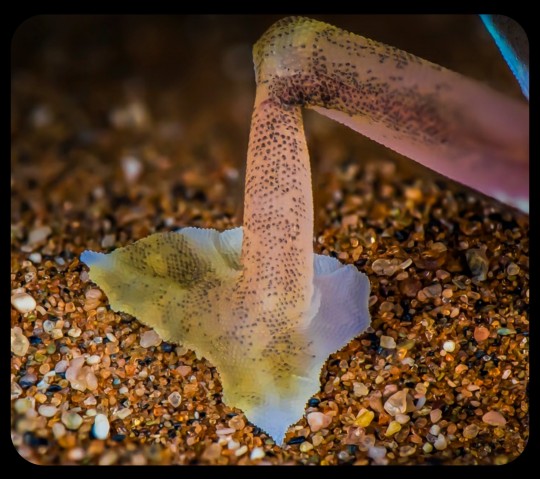
Namib sand geckos are covered in translucent scales, but they also have a strangely colorful appearance, as the colors/shades of their circulatory system, spinal column, internal organs, and optical membranes remain partially visible through the skin, producing various shades of pink, dark blue, purple, magenta, orange, and yellow.
They also have several distinctive markings running along their lower flank and encircling their eyes; these markings are known to fluoresce when exposed to UV light (including moonlight), emitting a bright, neon-green glow.

Some researchers have theorized that the biofluorescent markings may act as a signal to other geckos, allowing them to locate one another in the vast, desolate expanse of the desert, as this paper explains:
The fluorescent areas of P. rangei are concentrated around the eyes and along the lower flanks. This positioning is practically invisible to predators with a higher perspective (e.g. birds and jackals), but highly conspicuous from a gecko’s perspective. As P. rangei is sociable but generally solitary, and occurs at low population densities, such a signal might serve to locate conspecifics over greater distances ...
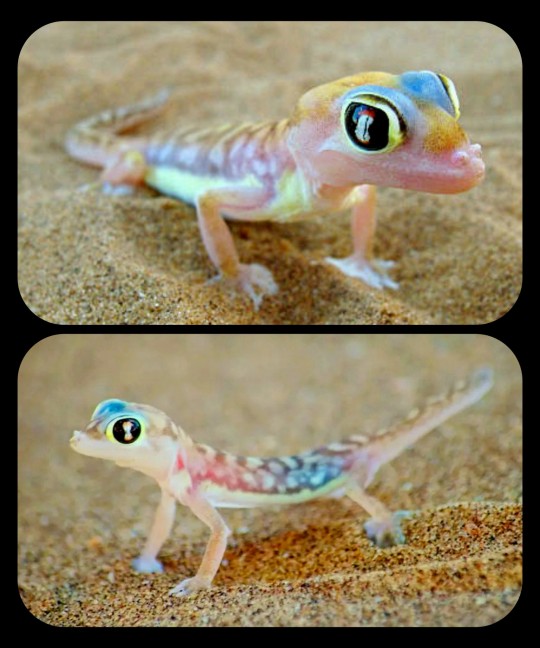
Encounters in P. rangei might serve purposes beyond mating opportunities: as the Namib desert has extremely low precipitation, fog is a key water source for its flora and fauna. Fog condenses on the bodies of the geckos, and they lick it from their faces. In husbandry, we have observed individuals licking water from conspecifics, taking advantage of a much greater available surface area.
Additionally, after short periods of isolation, the geckos run to meet each other. The combination of vital hydration with socialisation might reinforce signals that enable such meetings, and the cost of visibility to predators with higher vantage points, might constrain the signals to regions best visible from eye-level and below.
The Namib sand gecko is the only terrestrial vertebrate that is known to use an iridophore-based form of biofluorescence (you can find a more detailed explanation of that mechanism in the article mentioned above). The fluorescent dermal markings are also unique to this species.
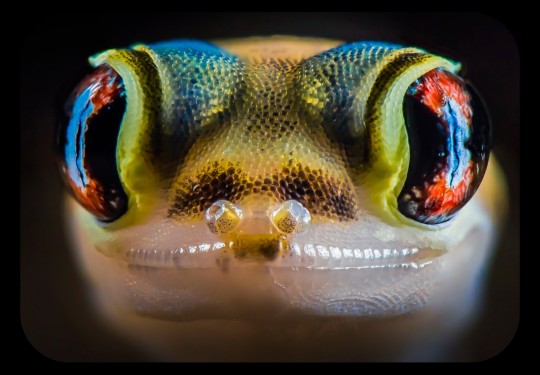
Sources & More Info:
Scientific Reports: Neon-green fluorescence in the desert gecko Pachydactylus rangei caused by iridophores
Animal Diversity Web: Pachydactylus rangei
Dr. Mark D. Scherz's Blog: A Neon-Green Glowing Gecko!
Australian Geographic: Skeleton Coast - Namibia's strange desert dwellers
#herpetology#reptiles#gecko#Pachydactylus rangei#namib sand gecko#palmatogecko#namib desert#namibia#biofluorescence#animals that glow#lizards#cute animals#biology#nature#africa#squamata#web-footed gecko#cool animals#geckos#South Africa#Angola#Skeleton Coast#wildlife#not an arthropod#but still pretty cool
172 notes
·
View notes
Text

The recently described mosasaur Jormungandr walhallaensis (what a name!) surfaces to observe an unfortunate young tyrannosaur adrift on a vegetation raft
#my art#paleoart#sciart#jormungandr#walhallaensis#mosasaur#cretaceous#north america#carnivore#marine reptile#paleontology#squamata#extinct#tyrannosaur#nature#ocean#aquatic
320 notes
·
View notes
Text
Mosasaurus!
Late Cretaceous. 83-66MYA.
They were one of the first mesozoic animals to be given a name, beating the first named dinosaur Megalosaurus by 60 years! (1764 for the first named Mosasaurus, 1824 for Megalosaurus, the first named Dinosaur)
#video#art#my art#paleontology#paleoart#science#not a dinosaur#also not a plesiosaur#mosasaurus#squamata#squamates#lizard#reptile#marine reptile
96 notes
·
View notes
Text
cutest boy in the world ...
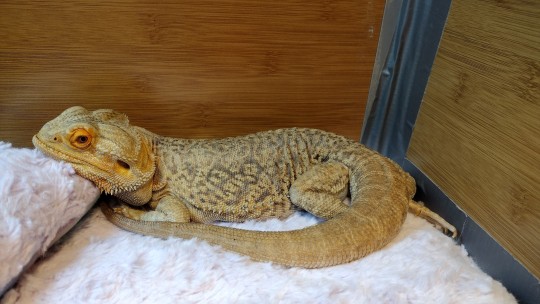
93 notes
·
View notes
Text


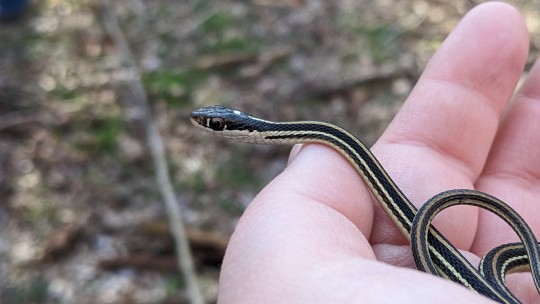
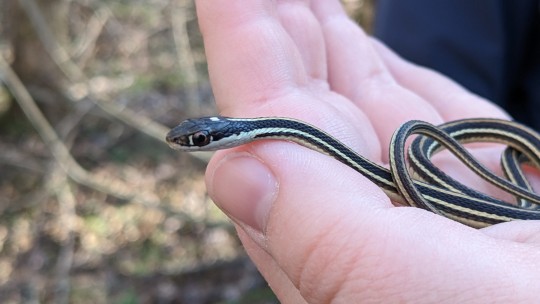
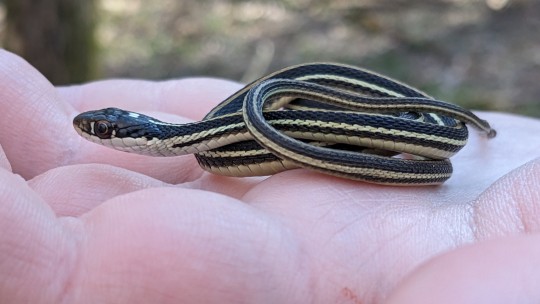
Western Ribbon Snake (Thamnophis proximus) - Lake County, Tennessee, 3/17/2023
#snakes#ribbon snake#western ribbon snake#reptile#squamata#colubridae#Thamnophis#Thamnophis proximus
259 notes
·
View notes
Photo

A male common agama (Agama agama) basking on a rock in Cameroon, Africa
by Bernard Dupont
#common agama#agamas#lizards#reptiles#agama agama#agama#agamidae#squamata#reptilia#chordata#wildlife: africa#wildlife: cameroon
7K notes
·
View notes
Text




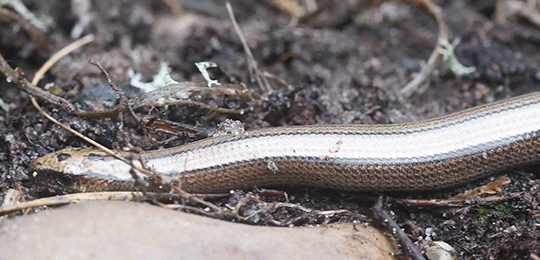
The slow worm isn't a worm or even a snake, it's a legless lizard. The distinctions between a slow worm and a snake are found in their blinking eyelids, visible ears, and shedding habits. They live semi-fossorial lives hunting for slugs and worms in tall grasses and damp areas.
©Chasing Scales
750 notes
·
View notes
Text
Spectember 2023 #06: Some Big Reptiles
An anonymous request asked for a "large ankylosaur-like herbivorous notosuchian":
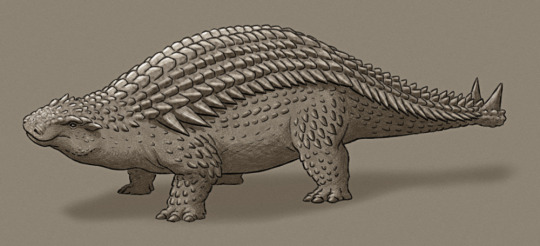
Mitafosuchus pachysomatus is descended from Simosuchus-like notosuchians in Madagascar that survived through the K-T extinction.
Highly convergent with the now-extinct ankylosaurs, it's a 5m long (~16'4") squat tank-like herbivore with hoof-like claws, and a wide short snout used for grazing on low vegetation. Heavy interlocking osteoderm amor covers most of its body, protecting it against the big carnivorous crocodyliformes that also still survive in this version of Cenozoic Madagascar.
———
Another anon wanted to see a "giant warm blooded lizard":

Atopohippus zestamenus is a descendant of invasive Argentine giant tegu lizards that became established on an island archipelago. At 2m tall (~6'6") and around 6m long (~20') it's an example of island gigantism, and occupies a high-browsing-herbivore ecological niche similar to giant tortoises and prosauropods.
Its ancestors' seasonal endothermy has become full endothermy in this species, partly due to young individuals having a very rapid growth rate and metabolism – their main defense against the predators on their island home (primarily carnivorous tegu-descendants and large birds of prey) is to simply get to a big body size as fast as they possibly can.
#spectember#spectember 2023#speculative evolution#notosuchia#crocodyliform#pseudosuchia#tegu#squamata#lizard#reptile#art#science illustration
272 notes
·
View notes
Text

Louisiana Pine Snake (Pituophis ruthveni)
Family: Colubrid Snake Family (Colubridae)
IUCN Conservation Status: Endangered
Among North America's rarest snakes, the Louisiana Pine Snake's small population size is the result of its highly specific habitat requirements and the resulting sensitivity to human-driven habitat changes that comes with them; members of this species feed primarily on Baird's Pocket Gophers (a specific species of burrowing rodent,) and almost always live in abandoned Baird's Pocket Gopher burrows (often after having eaten the burrows creator,) and as such in areas where Baird's Pocket Gophers are not present Lousiana Pine Snakes cannot survive. Native to western Lousiana and eastern Texas, members of this species do best in pine forests (particularly those dominated by a specific species of pine, Pinus palustris, forests of which are noted to generally support high levels of biodiversity as a result of the loose canopies they form which allow many smaller species of plants to coexist with them,) and spend most of their lives underground, rarely travelling far from their stolen burrows. They emerge from their burrows mainly during the mid-day to hunt (targeting rabbits, frogs and other rodents when Baird's Pocket Gophers are scarce,) but otherwise remain concealed underground in order to avoid predation and unusually high or low temperatures; during the winter, when the weather becomes colder and prey becomes scarcer, they travel deeper into a Baird's Pocket Gopher burrow and hibernate until the early spring.
--------------------------------------------------------------------------
Image Source: https://www.inaturalist.org/taxa/29041-Pituophis-ruthveni
#Louisiana pine snake#snake#snakes#reptile#reptiles#zoology#biology#herpetology#animal#animals#herpetofauna#squamata#squamate#squamates#wildlife#North American wildlife#North American snakes
182 notes
·
View notes
Text
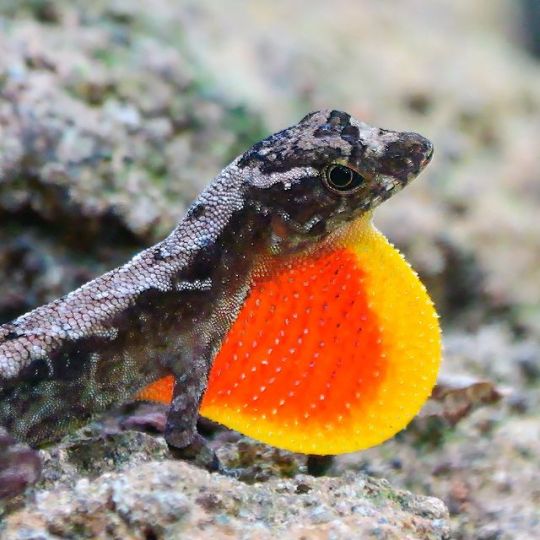
Humble Anole
87 notes
·
View notes